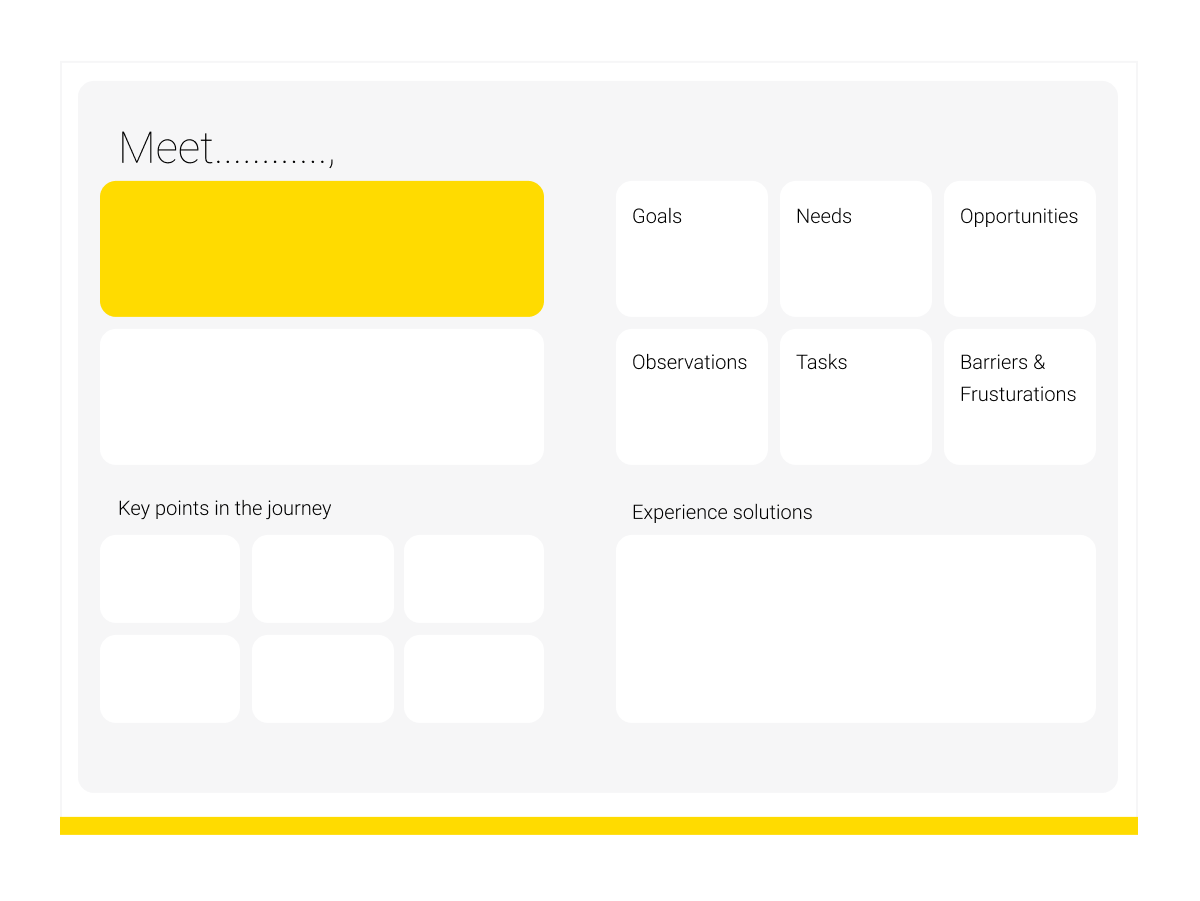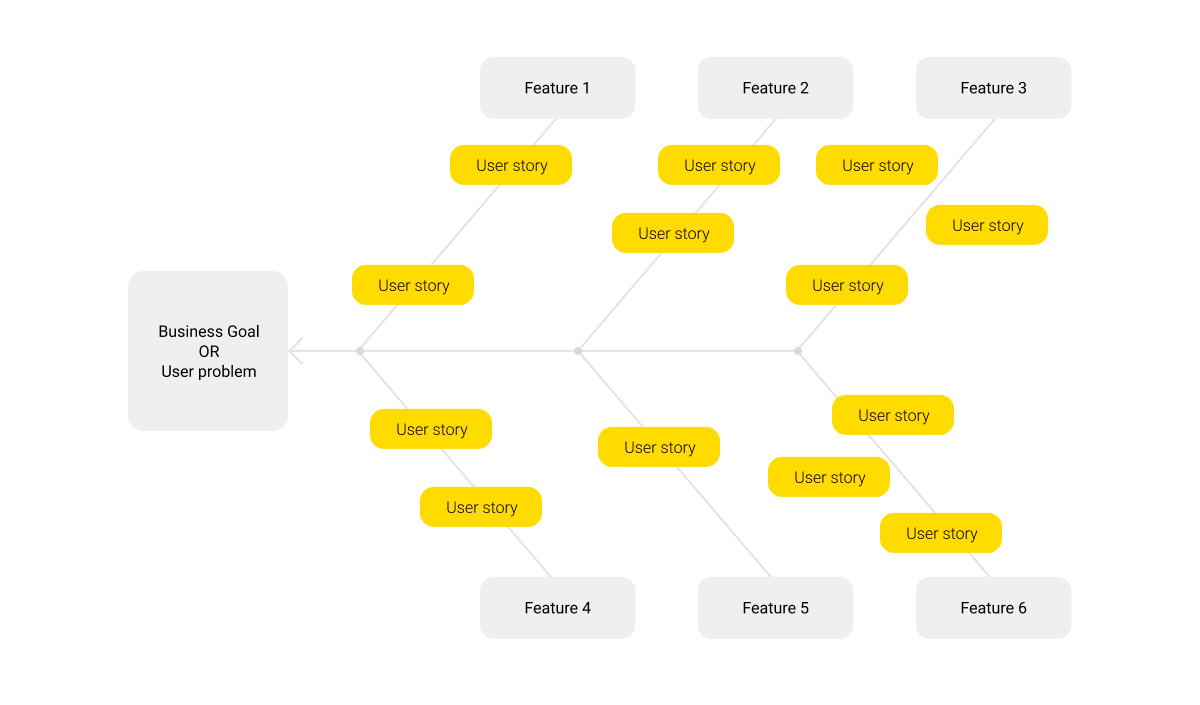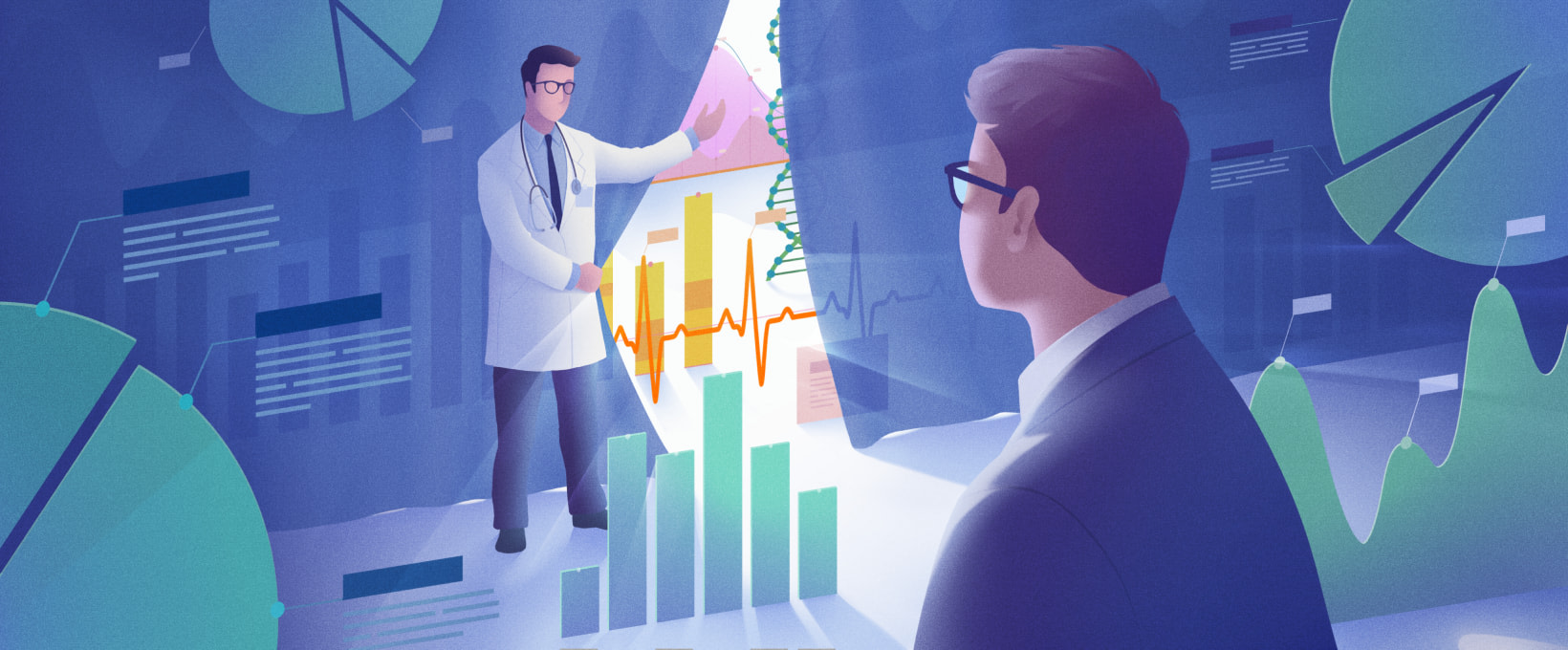- Why are proper discovery techniques crucial for success?
- Product Discovery principles to follow
- Using a standardized approach
- Achieving the appropriate level of detail
- Narrowing down the list of ideas
- Prototyping on a selective basis
- Building an MVP
- What Product Discovery tools to use?
- User personas
- A customer journey map
- Fishbone diagrams and user story maps
- Conclusion
At the beginning of every project, a customer and a development team might face uncertainty, so clarifying project details to the maximum possible extent is the first priority. This is especially important for large-scale projects with big teams. In this piece, Andersen’s experts in business analysis will share what Product Discovery principles are and how following them helps teams achieve outstanding results on time and within budget.
Why are proper discovery techniques crucial for success?
Let’s imagine that you, as a customer, are building an apartment building. At first sight, everything is clear – you only need to hire builders and provide them with the required materials. However, to build the apartment building successfully, you need to answer a range of questions like “Who is going to live in it?” “What benefits will it give to residents?” “Will a new apartment building be better than the existing ones?” “What materials should be used?” and so on. Project Discovery conducted by skilled Business Analysts is essential if you are aiming for success and don’t want unexpected results at the end of the development. The results of the Discovery phase have a drastic impact on the entire software development life cycle and determine its success or complete failure. Therefore, it’s very important to conduct the Discovery phase properly. The biggest possible mistake some customers make is when they try to describe their products by themselves without turning to professionals who follow Product Discovery best practices. In the next sections, we will tell you what these best practices are and how exactly Andersen’s top-notch Business Analysts apply them to their work.
Product Discovery principles to follow
Andersen's team has more than a thousand Discovery phases under its belt. Through trial and error, we have chosen and adopted the following Product Discovery principles that help us build a strong foundation for every future product.
Using a standardized approach
It might seem that the Discovery phase requires creativity. However, it’s crucial to follow a solid plan and use document templates ensuring that all the details essential for successful development are taken into account.
Achieving the appropriate level of detail
The Discovery phase usually takes six weeks max, even for large-scale projects. Excessive diving into details is like swimming in a pool with crocodiles – they will drag you into the depths! During the Discovery phase, a team should only focus on vision and scope. This is true for both business and technological issues. Becoming bogged down in details is counterproductive, since it takes too much time and the decisions made will likely be reconsidered several times at the later stages of the development. Thus, Business Analysts need to consider the whole picture.
Narrowing down the list of ideas
Starting to work on a project is always inspiring, and customers might be tempted to build a perfect product that will be a universal solution to all user problems. Therefore, they welcome every idea that comes to their minds. At the end of the day, it’s far easier to say “yes” than “no” to exciting ideas. However, if you try to put your every idea into practice, you are in danger of losing connection with the market reality. Thus, you will end up creating a “Frankenstein” that will be too complicated to meet user needs. The truth is that only one in ten ideas is going to work. Therefore, even the best ideas need to be thoroughly evaluated, and not all ideas should be implemented during the first product release. The good news is that you can always return to your ideas later to upgrade and improve products that are already in production and bringing you profit.
Prototyping on a selective basis
Users can only say “yes” or “no” to products that they can see and touch. Therefore, prototyping and testing ideas on real users are the only ways to find out whether these ideas are likely to skyrocket. However, don’t waste too much time on creating prototypes. Throwaway prototypes will be just enough for the beginning, as they will be reworked later during the design stage. After simple sketches are verified and approved, a designer will prepare a clickable high-quality prototype without even writing a line of code. Don’t forget about testing them prior to proceeding to the development stage.
Building an MVP
It is impossible to create an outstanding product in just one go. During the Discovery phase, we recommend focusing on the one or two most critical user problems and the easiest and fastest ways to solve them. By doing so, a team will create an MVP (minimum viable product) that will be launched faster than the final version of the product since it doesn’t presuppose the development of every piece of functionality.
What Product Discovery tools to use?
Today, the following tools are available for business analysis to conduct the Discovery phase in a productive fashion:
- Confluence for drawing up documents,
- Figma for designing interfaces,
- Miro for ideating and designing products,
- Diagrams.net for creating schemas,
- InVision for creating live prototypes.
Using the right tools is as important as creating the right artifacts. Below are the three artifacts in software development that Business Analysts draw up during almost every Product Discovery.
User personas
The importance of creating user personas can hardly be overestimated. This artifact helps project participants better understand who the users are, what needs and problems they have, what their experience with similar or analogous products is, and what buying behavior they have. Based on this information, you will know what the majority of your users are like and will be able to prioritize the development accordingly.

A customer journey map
A customer journey map shows how users interact with your product or service at different times – from the moment they become aware of it, through the purchase process, up to the time when they contact client support and leave feedback. This artifact will help you better understand your users’ needs, ensure a seamless user experience, know who is responsible for client service at different stages of the customer journey, and determine how you can measure your success rate.

Fishbone diagrams and user story maps
Fishbone diagrams, mind maps, and user story maps significantly help a team elicit, visually organize, and prioritize product features and underlying user requirements. Thanks to these artifacts, you can connect product requirements with the challenges that the product is supposed to resolve for your users and define the scope of work for the MVP development.

Conclusion
Conducting a Discovery phase is not an easy task. Business Analysts need to properly elicit and document product requirements and prioritize features based on Product Discovery best practices. Properly conducted market research and Product Discovery determine the success of the entire project because it allows you to minimize errors at the early stages of the software development life cycle, reduce development expenses, and ensure faster time to market. Conducting Project Discovery requires the involvement of skilled Business Analysts with a proven track record and the mastery of modern Product Discovery tools. At Andersen, we employ experts who have successfully implemented dozens of projects in Healthcare, Logistics, FinTech, eCommerce, and other major industries. Contact us if you want to get a clear vision of your future product with an accurate estimation of its cost, timelines, and risks.














